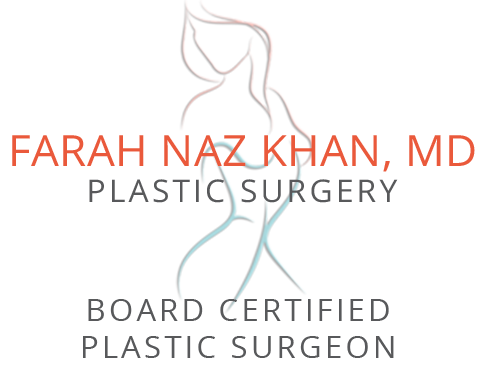 Liposuction is a popular cosmetic procedure that helps remove excess fat from specific areas of the body. Many individuals opt for liposuction to achieve a more contoured silhouette and boost their confidence. However, there are limits to how much fat can safely be removed during a liposuction procedure. Understanding these limitations is crucial for anyone considering this type of surgery. Board-certified female plastic surgeon Dr. Farah Naz Khan provides liposuction to patients in Dallas, Plano, Texas, and surrounding communities.
Liposuction is a popular cosmetic procedure that helps remove excess fat from specific areas of the body. Many individuals opt for liposuction to achieve a more contoured silhouette and boost their confidence. However, there are limits to how much fat can safely be removed during a liposuction procedure. Understanding these limitations is crucial for anyone considering this type of surgery. Board-certified female plastic surgeon Dr. Farah Naz Khan provides liposuction to patients in Dallas, Plano, Texas, and surrounding communities.
Understanding Liposuction and Its Purpose
Liposuction, often referred to as lipoplasty or body contouring surgery, serves as a method to sculpt the body by removing undesirable fat from specific areas. While many may misconceive it as a pathway to significant weight loss, the true purpose of liposuction lies in its ability to target and eliminate stubborn fat deposits that persist despite a healthy lifestyle, including regular exercise and a balanced diet. This procedure is particularly beneficial for those areas of the body that are notoriously resistant to traditional weight loss methods, such as the abdomen, thighs, arms, hips, and buttocks.
The essence of liposuction is not about shedding pounds; instead, it’s about refining and enhancing the body’s contour, offering a more aesthetically pleasing and proportionate appearance. This is why it’s crucial for individuals considering liposuction to have a clear understanding of its objectives and realistic expectations about the outcomes. Liposuction can make significant improvements in the shape and silhouette of the body, but it is not a cure-all for weight-related issues.
Furthermore, the effectiveness and safety of the procedure are maximized when performed on candidates who are close to their ideal body weight but struggle with isolated fat deposits. This distinction highlights liposuction’s role as a complement to a healthy lifestyle, rather than an alternative to weight loss strategies like diet and exercise. By focusing on specific problem areas, liposuction can achieve results that might otherwise remain unattainable, providing a significant boost to a person’s self-image and confidence.
The Safety Threshold in Fat Removal
In the realm of liposuction, the paramount concern is the safety and well-being of the patient, which directly influences the limitations placed on the volume of fat that can be extracted in a single session. A generally accepted guideline within the medical community posits that the upper limit of fat removal should not exceed 5 liters, equivalent to approximately 11 pounds, during one liposuction procedure. This cap is established to mitigate potential risks including significant fluid shifts in the body, the possibility of blood loss, and the potential for irregular body contours post-surgery, which can detract from the desired aesthetic outcome.
Adherence to this threshold is critical, as venturing beyond it introduces a heightened risk of complications that could compromise not only the results of the liposurgery but also the overall health of the patient. The emphasis on maintaining this limit is a testament to the medical community’s commitment to prioritizing patient safety above aesthetic desires.
The determination of how much fat to remove is made on a case-by-case basis, factoring in the individual’s health status, the areas of the body being targeted, and the volume of fat present. This personalized approach ensures that the procedure is tailored to the specific needs and physical condition of the patient, while still aligning with the overarching objective of maximizing safety and minimizing risk.
This safety threshold underscores the importance of a collaborative and informed decision-making process between the patient and the surgeon. It serves as a safeguard, ensuring that the pursuit of aesthetic enhancements through liposuction does not compromise the individual’s well-being.
Factors Influencing the Amount of Fat Removed
The effectiveness and safety of a liposuction procedure are not solely dependent on the surgical skills of the physician but are also significantly influenced by various individual-specific factors. Among these, the overall health and body composition of the patient play pivotal roles. A person’s body mass index (BMI), the density and distribution of fat, as well as their skin elasticity, can all affect the volume of fat that can be safely extracted. Additionally, the specific body areas targeted for fat removal contribute to determining the optimal amount of fat to be removed; some areas, such as the abdomen or thighs, may allow for a larger volume of fat extraction compared to more delicate regions like the arms or neck.
The presence of certain medical conditions or the use of medications that could potentially affect the procedure’s outcomes or recovery also necessitates careful consideration. Surgeons must evaluate these health-related factors thoroughly to ensure that the maximum amount of fat is removed without compromising the patient’s safety or well-being.
Moreover, the technique and technology used during the liposuction procedure can further impact the amount of fat that can be removed. Innovations in liposuction methods have enhanced the precision with which fat can be targeted and extracted, allowing surgeons to remove fat more efficiently while ensuring patient safety. The experience and judgment of the surgeon in utilizing these technologies are crucial in achieving the desired aesthetic results without crossing the threshold of risk.
In summary, the interplay between a patient’s unique physiological characteristics and the surgical approach adopted determines the extent of fat removal achievable through liposuction, underscoring the necessity of a customized strategy for each individual case.
Average Amounts: What to Expect During Recovery
Following a liposuction procedure, individuals generally experience a period of recovery characterized by several common symptoms, including swelling, bruising, and discomfort in the areas where fat was removed. These symptoms are a normal part of the healing process and typically begin to subside within a few weeks. To facilitate a smoother recovery, adherence to the surgeon’s post-operative care instructions is crucial. These may include recommendations for rest, the use of compression garments to support the healing tissues, and guidelines for gradually resuming physical activities.
Recovery timelines can vary from person to person, but most find that they are able to return to their daily routines and work within one to two weeks post-surgery. However, it is important to note that while light activities can be resumed relatively quickly, engaging in strenuous exercise or heavy lifting should be postponed for several weeks. This cautious approach helps prevent complications and ensures that the body has adequate time to heal properly.
Throughout the recovery phase, it’s essential for patients to maintain open communication with their surgical team. Reporting any concerns or unusual symptoms promptly allows for timely intervention and support. Additionally, follow-up appointments play a vital role in monitoring the progress of healing and the effectiveness of the fat removal, helping patients achieve the best possible outcomes from their liposuction procedure.
Techniques That Maximize Fat Removal Safety
The evolution of liposuction techniques has significantly contributed to the enhancement of both the efficacy and safety of fat removal procedures. Innovations in this field have introduced methods that allow for precise targeting of fat cells while simultaneously protecting the surrounding tissues from undue harm. One such method, tumescent liposuction, involves the infusion of a large volume of a dilute solution containing local anesthesia and other medications into the fatty tissue before removal. This technique not only minimizes blood loss by constricting blood vessels but also reduces pain and swelling during the recovery period, making the process safer for the patient.
Ultrasound-assisted liposuction (UAL) is another advancement that utilizes ultrasonic vibrations to liquefy fat cells, facilitating their easier and safer extraction. This method is particularly beneficial for treating dense fat areas or for revising previous liposuction procedures. Similarly, laser-assisted liposuction uses laser energy to dissolve fat, which can then be removed with less force, reducing trauma to the area and contributing to a quicker recovery time.
Each of these techniques offers distinct advantages and can be selected based on the specific needs and conditions of the patient, further personalizing the liposuction experience. By employing these advanced methods, surgeons are better equipped to optimize the safety and outcomes of fat removal, ensuring a higher level of precision and patient satisfaction.
Preparing for Your Liposuction Procedure
Optimal preparation is key to a successful liposuction journey, emphasizing the importance of being in a state of good health and possessing a clear understanding of the procedure’s realistic outcomes. Engaging in open and thorough discussions with your surgeon about your medical history, any existing health conditions, and current medications is vital to ensure a tailored approach to your liposuction experience. This dialogue is crucial for identifying any potential risks and determining the most appropriate surgical strategy. Additionally, planning for the post-surgery period involves arranging for assistance during your initial recovery phase at home, as navigating daily activities might be challenging. Adhering closely to the surgeon’s pre-operative guidelines, including dietary restrictions or specific instructions regarding medication adjustments, will further contribute to a smooth and efficient recovery process. By taking these preparatory steps seriously, you are setting the stage for a smoother surgical experience and paving the way towards achieving your desired aesthetic goals with liposuction.
Contact Board Certified Dallas Female Plastic Surgeon, Dr. Farah Khan to Schedule a Consultation
To schedule a consultation with Board Certified Dallas Plastic Surgeon, Dr. Farah Khan please call 469-437-5426 or click here to contact us.
Taking patients from in and around Dallas, Plano, Fort Worth, Grapevine, Garland, Mesquite, Carrollton, Irving, Frisco, Texas and more.
